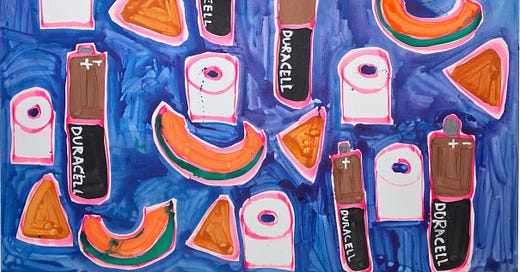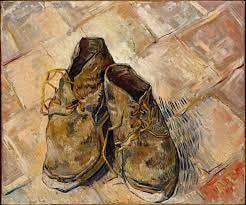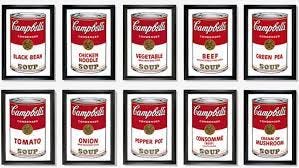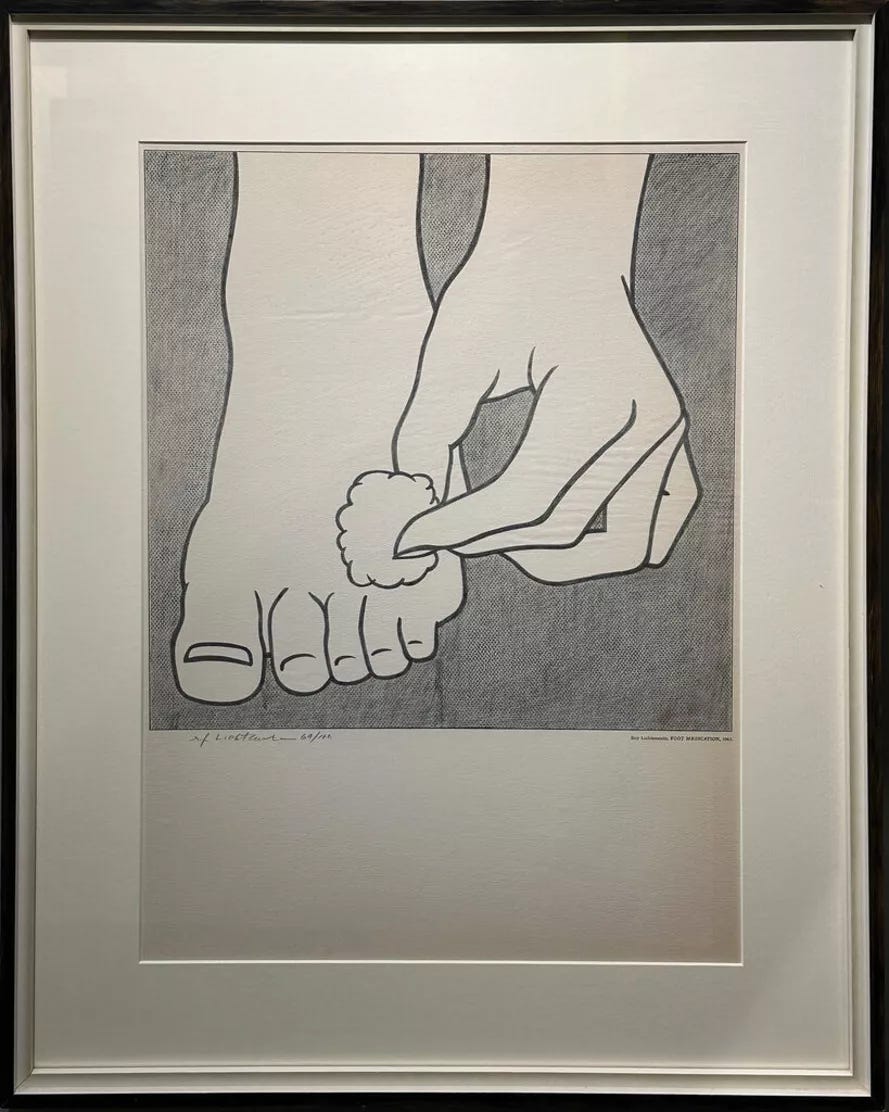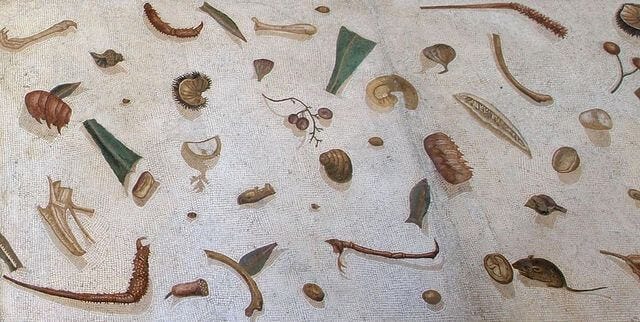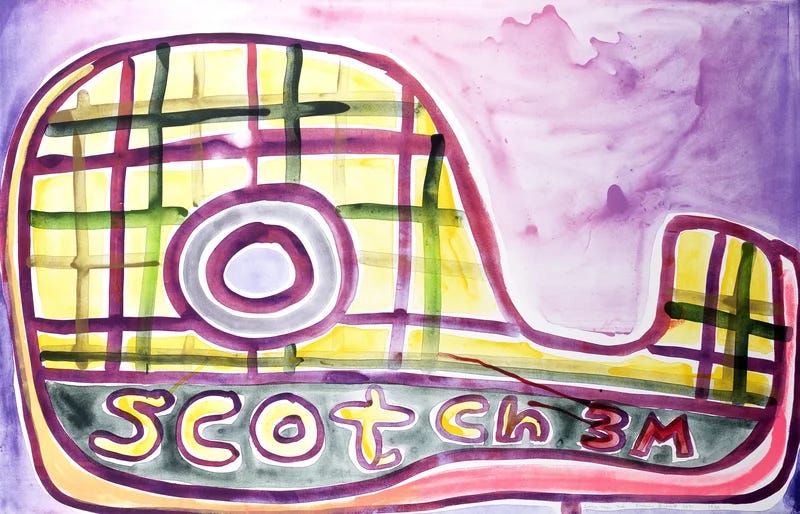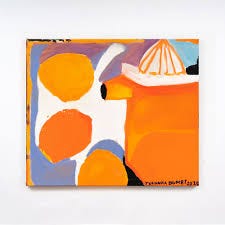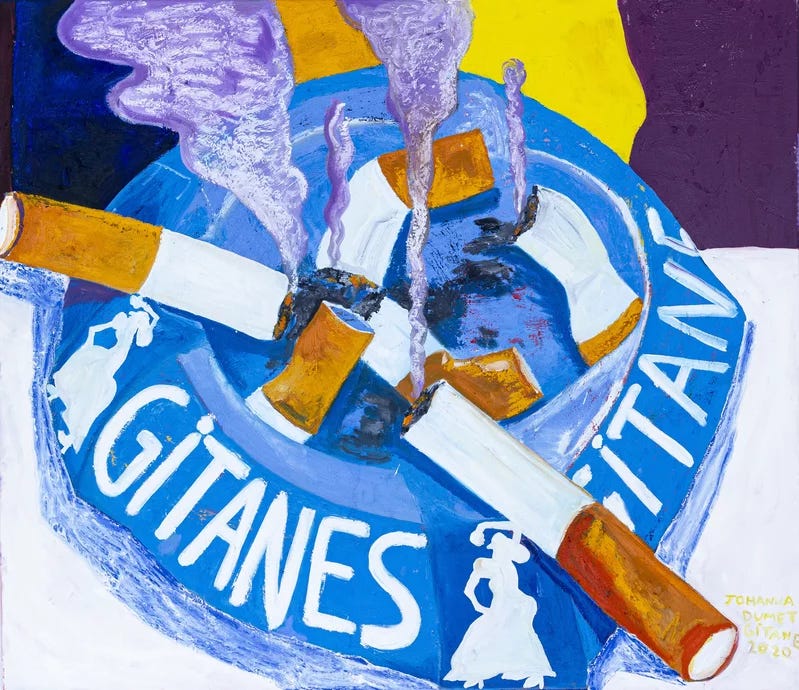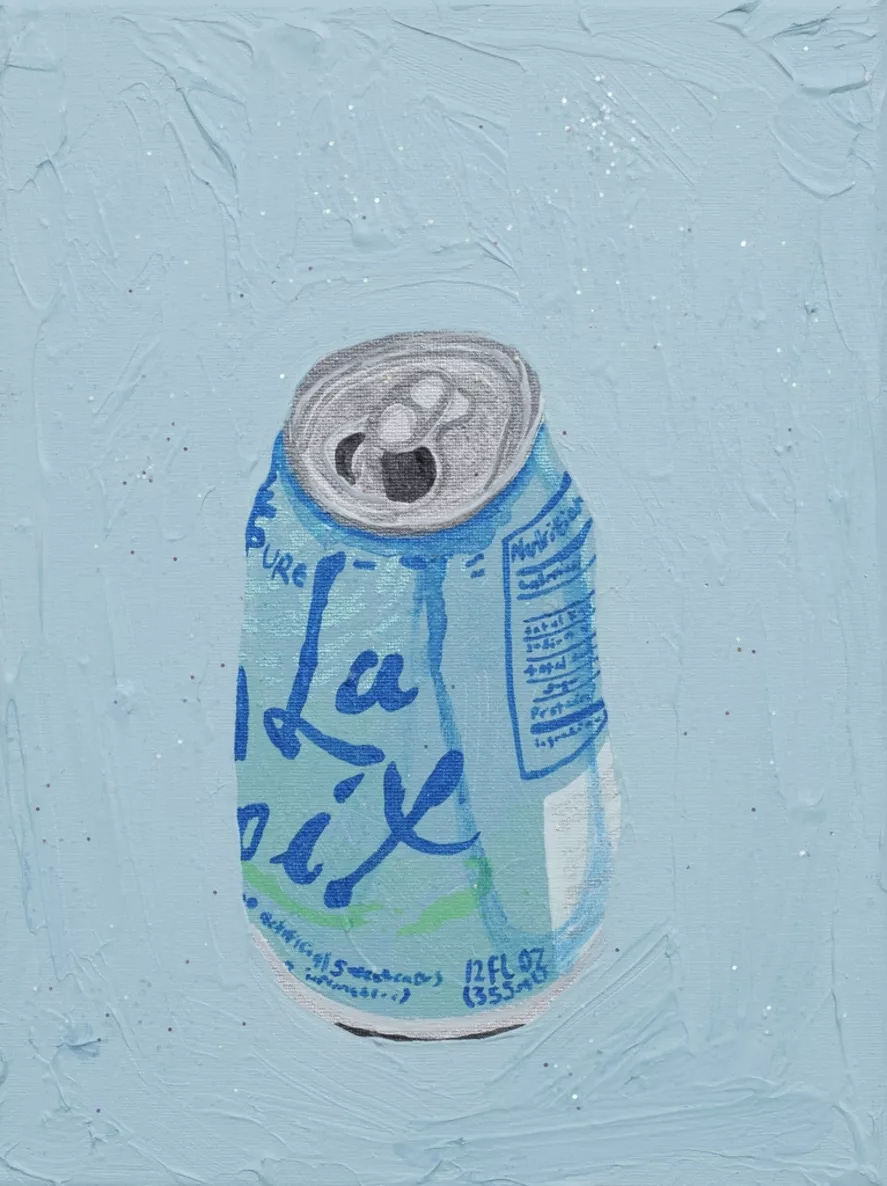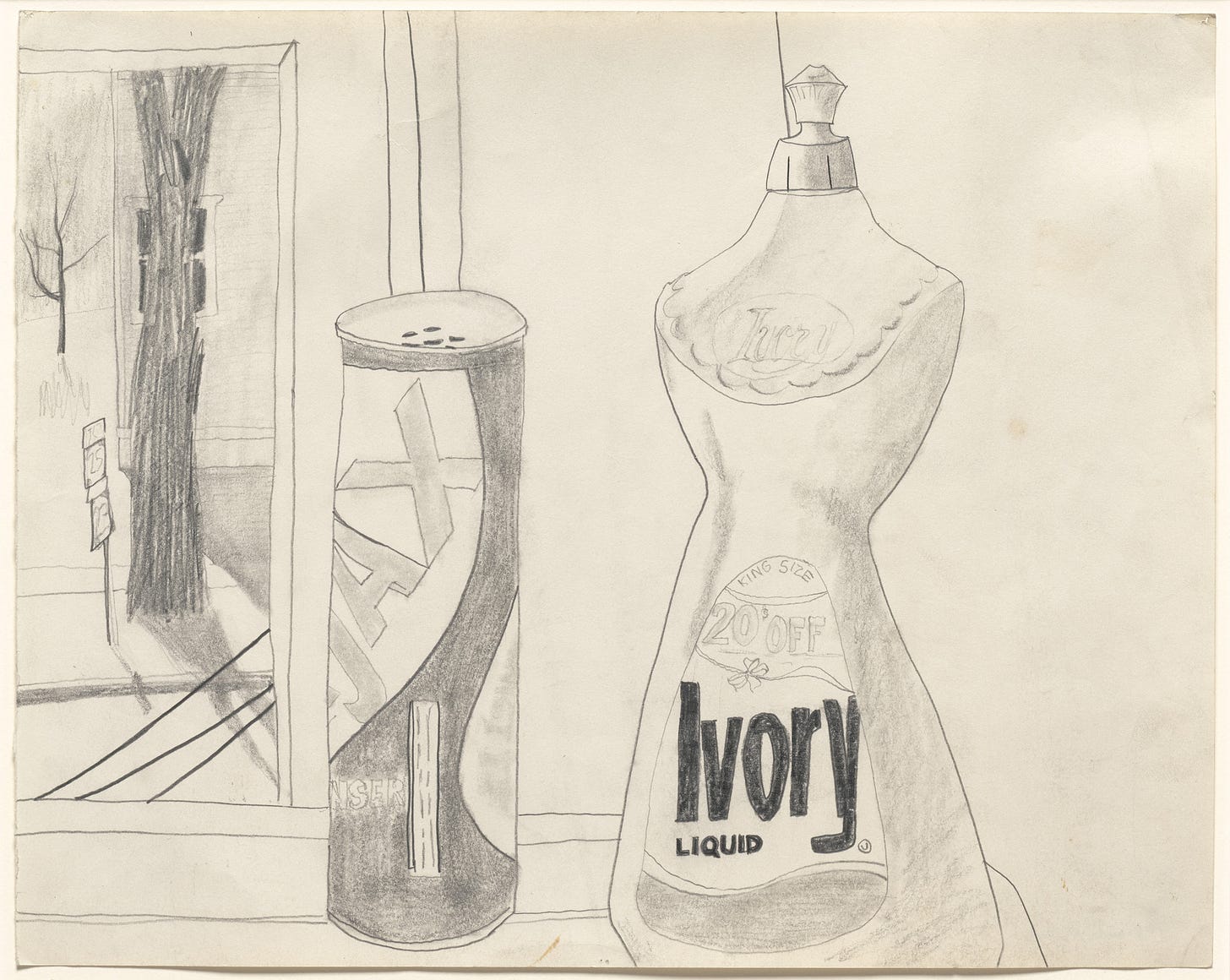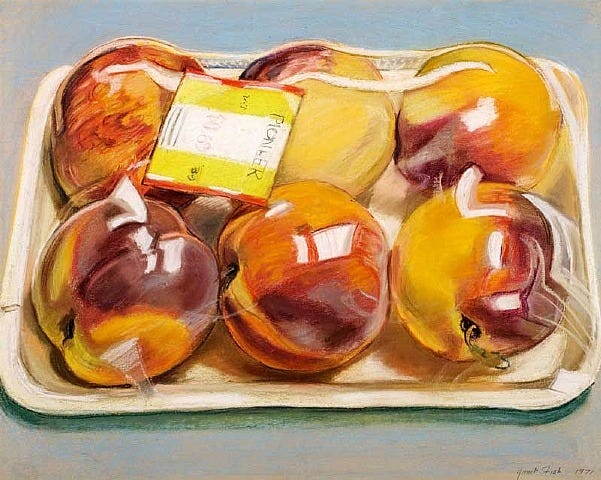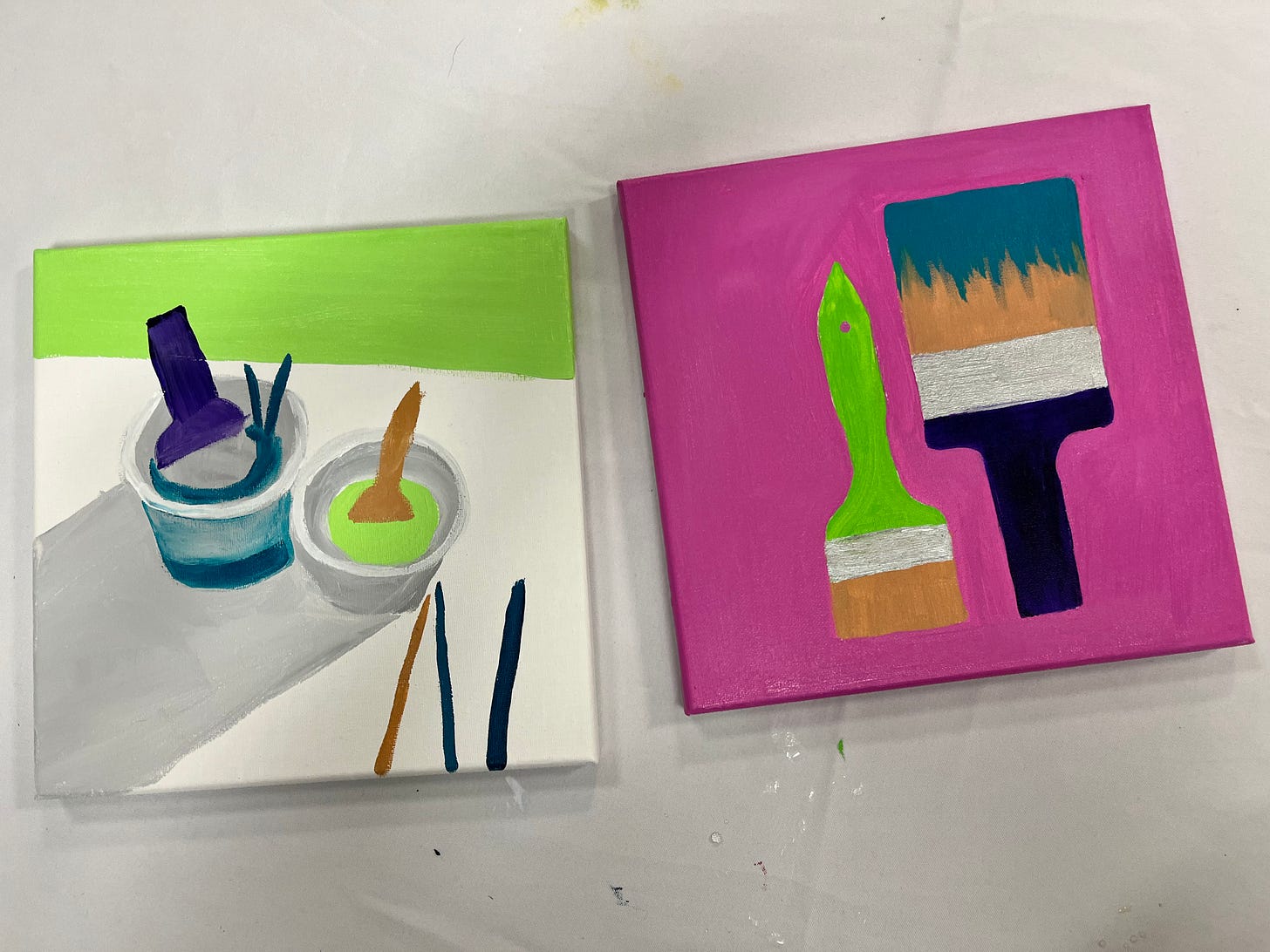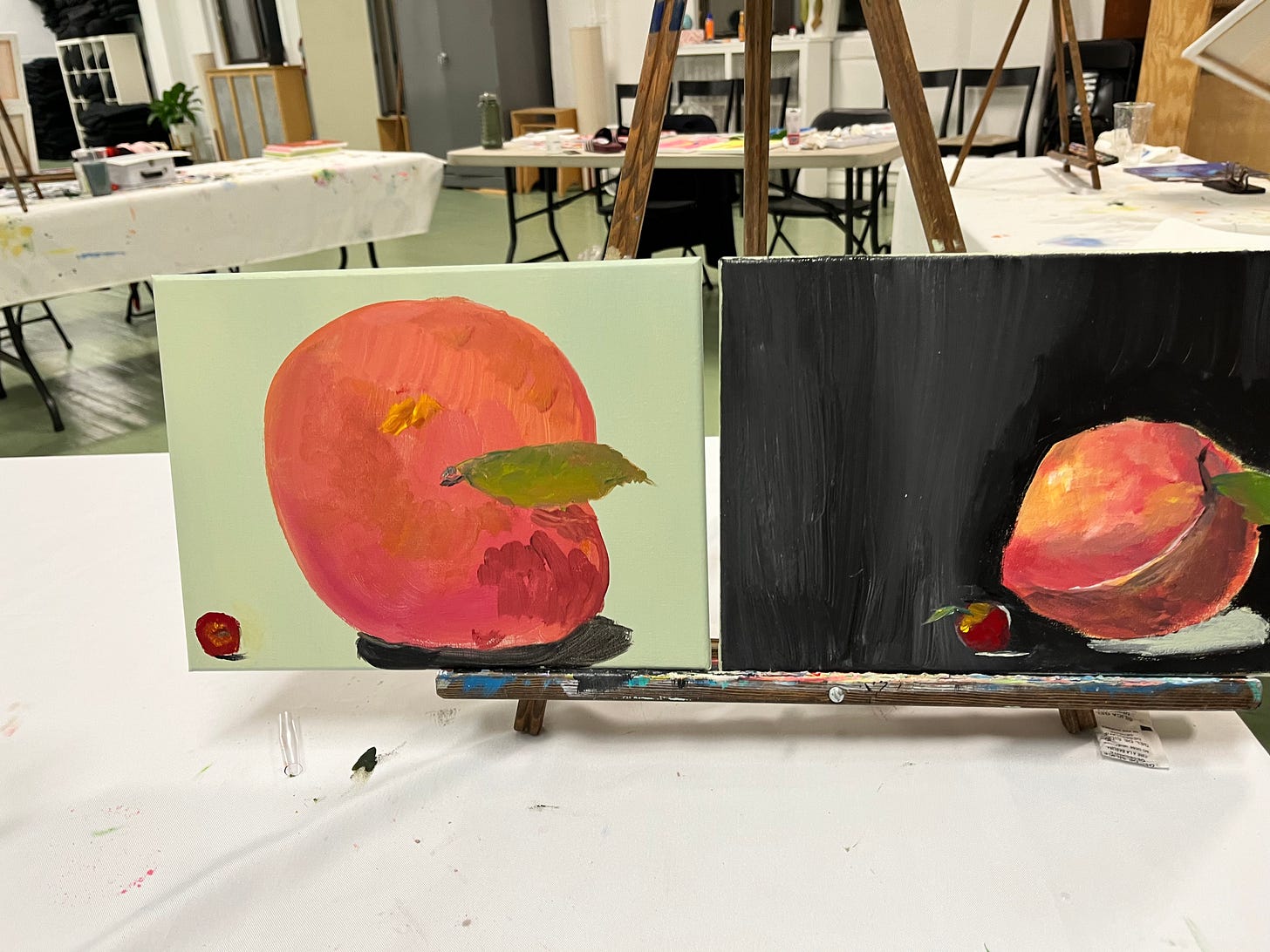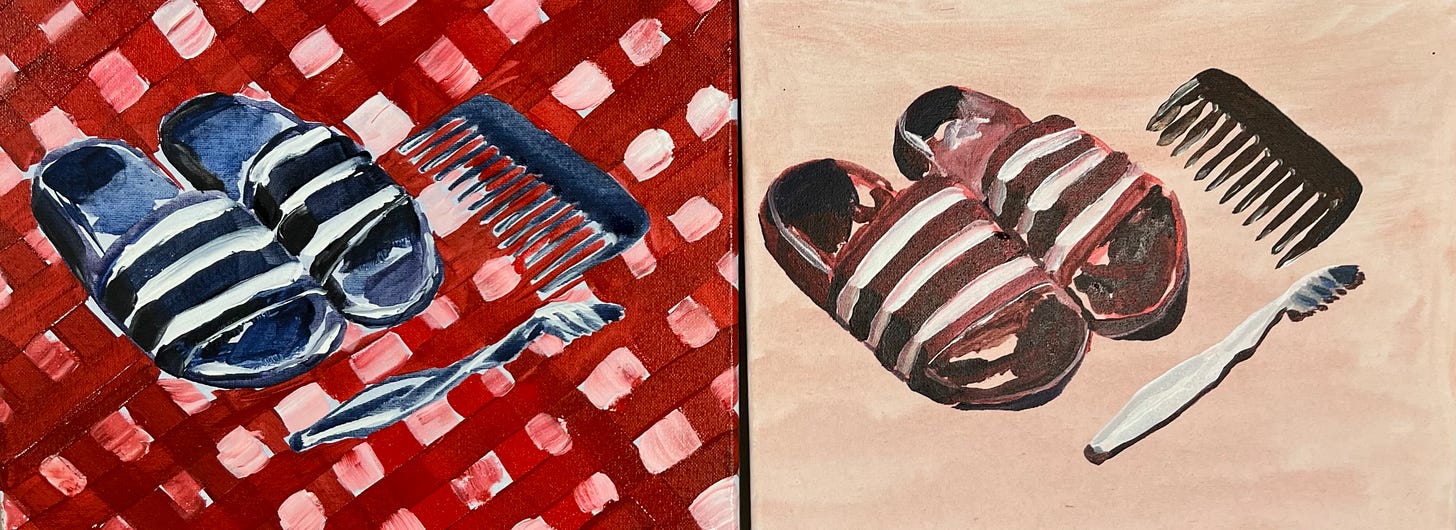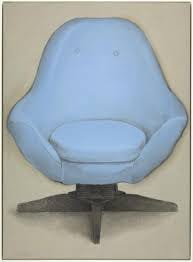Improve your observation skills by painting everyday objects
And glorify the mundane in the process
Van Gogh had his shoes.
Vincent Van Gogh, Shoes
Warhol had his soup cans.
Andy Warhol, Campbell’s Soup
And Roy Lichtenstein had his cotton ball. And, a little unsettlingly, he also had his foot medication…
Roy Lichtenstein Foot Medication
Capturing the everyday object in art has a long history. This ancient Roman mosaic of an unswept floor following a banquet in the Vatican proves just how long.
It makes sense that when you can’t afford to hire a live model and don’t want to climb to the top of a Swiss Alp to paint it that you would grab whatever is lying around to paint.
There are many benefits of painting ordinary objects beyond just convenience. You can do a series of that object, like Van Gogh’s shoes, to practice capturing how light hits the object at different points in the day. You can experiment with color choices and experiment with composition.
Katherine Bernhardt Giant Jungle Office 2017
For contemporary painter Katherine Bernhardt everyday objects are wonderful shapes and colors to play with, and Bernhardt doesn’t seem to see her artworks as commentary on modern consumerism as many art critics do.
“They’re just good colors and shapes. Look at a sock: it’s got really good colors, white with red and blue stripes. Toilet paper is a squarish oval. A cigarette is a line. A dorsal fin is a triangle, and so is a Dorito.” - Katherine Bernhardt
Katherine Bernhardt, Duracell, Cantalope, Doritos, Toilet Paper
Katherine Bernhardt, Scotch Magic Tape
Johanna Dumet also takes common objects like orange juicers and branded ashtrays and plays with composition, the picture plane, and shape. She flattens some things and gives form to others and she is unafraid of dropping in some text.
Johanna Dumet, Capitaine Juice
Nicole Dyer became well known for her series of paintings and papier-mache sculptures of La Croix packaging and products. The most fetishized sparkling water of this era, Dyer highlights the fact that La Croix’s packaging is a kind of awesomely bold and obnoxious artwork in its own right.
Nicole Dyer, La Croix, 2017
Claes Oldenburg was the king of making us notice mundane objects by turning them into towering sculptures of clothespins and cake slices. But he also did some wonderful drawings and paintings of common artifacts, often at play.
Claes Oldenburg, Rolling Collar and Necktie
Robert Gober Untitled (Ivory Soap Drawing)
Contemporary artist (and amazing curator) Robert Gober does sculptures and 2D work of the things you find in a home, define the way we live, and help establish our quality of life.
This is a reminder that by putting an everyday object in your artistic path, an object that we presume to know extremely well because it is so ubiquitous, that object becomes a tool for us to better observe our world.
Take hyper-realist painter Janet Fish who sees observation of an object as a way to engage with it.
I feel as though I haven't seen an object until I actually start painting it. - Janet Fish
Janet Fish, Peaches
Janet Fish, Vinegar Bottles
For our class on everyday objects I bring in a ton of random objects from my house, from Windex bottles to (unused) toothbrushes. The painters select a handful of items and paints two or three versions of them. Something about the banality of the objects and our familiarity with them, combined with the repetition, makes most of the painters experiment with their painting style and focus.
This can be a great exercise for all painters. Look around your bathroom or kitchen, pull out the most boring objects you can find, the things you overlook every day but use every day. Maybe it is the drain of your sink or your hairdryer or a key fob. Then spend an hour or two making multiple versions of it. I will be surprised if you don’t make some exciting artistic choices and I will also be surprised if that object doesn’t take on a new life for you.
Oddly, just as I was about to finish writing this newsletter the Tate Museum posted this painting by Catherine Story on its Instagram.
Catherine Story, Blue Rosebud.
The painting is from a series of paintings Story made of this chair. It was an old chair from her studio, one that was going to be thrown away. Story said, “I saw it afresh from the back and I realized that the history of the chair, as well as the form itself, mirrored many of the stories that were in my mind.”
That is another thing we do when we paint everyday objects - we tell their story.
Thanks for reading and have a great week!
Upcoming events at The Painting School can be found here!
I’m working on a live virtual class to launch in March - stay tuned for how to get involved and send me an email here if you would like to be informed when we are launching that program. Maybe we’ll be painting our own La Croix cans in that as well…
Happy Painting!
Sara

